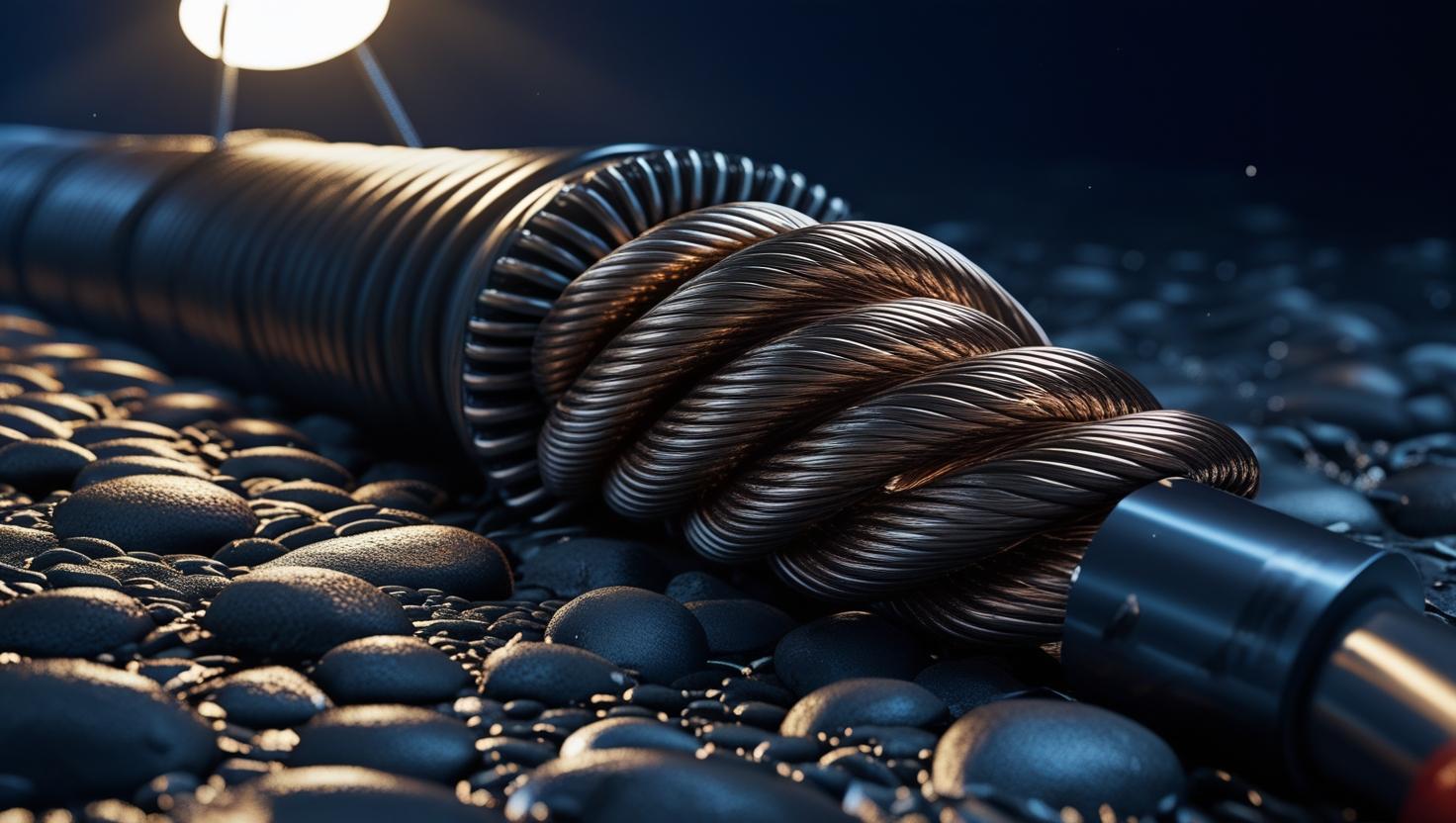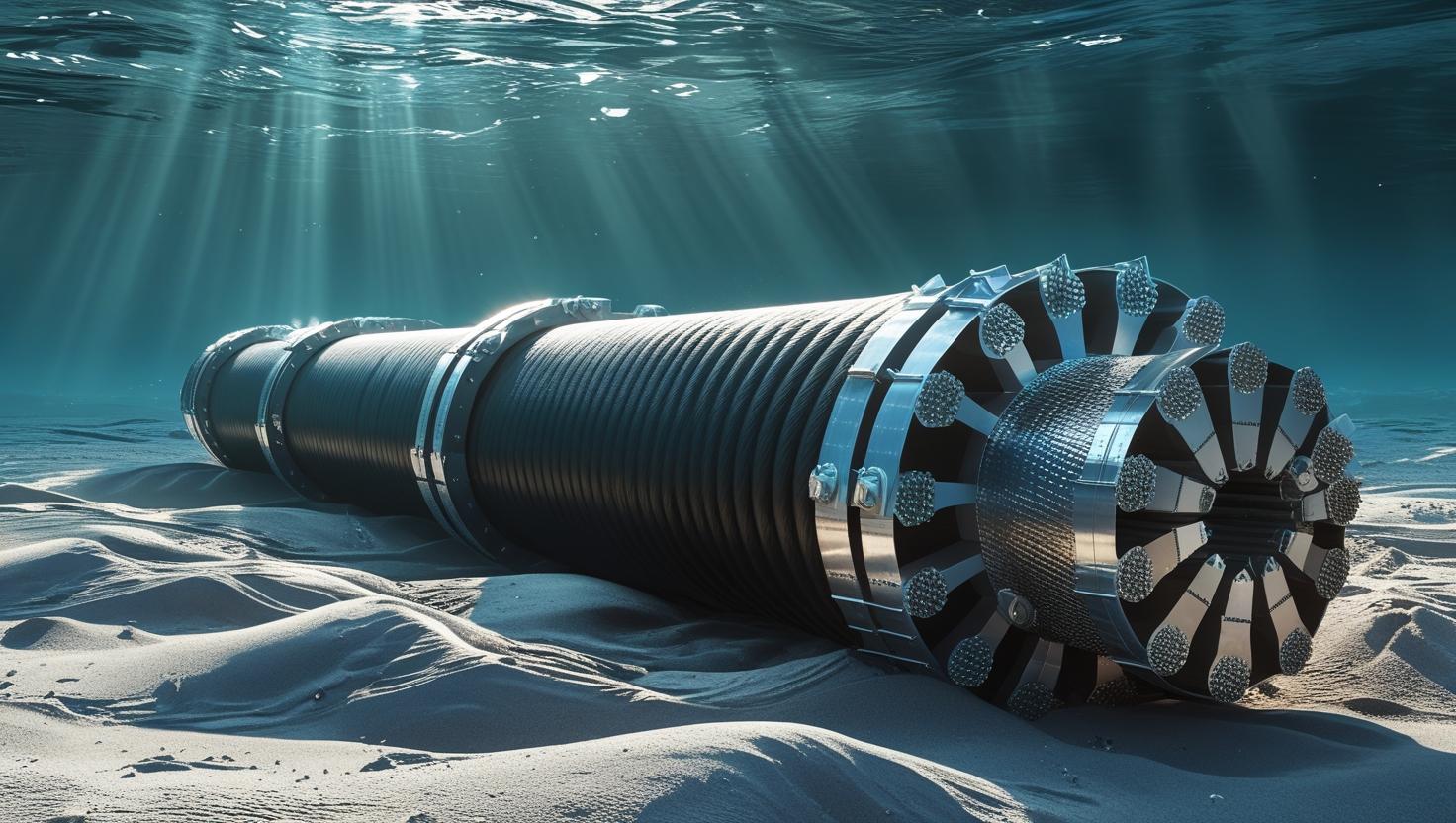The Submarine Power Cable Market is a vital component of the global energy infrastructure, facilitating the transmission of electricity across vast bodies of water, such as oceans, seas, and large lakes. These specialized cables are designed to carry high-voltage electric power beneath water, connecting regions, countries, and continents to ensure reliable energy supply. Unlike traditional overhead power lines, submarine power cables are engineered to withstand harsh underwater environments, making them essential for offshore renewable energy projects, intercontinental power grids, and remote energy distribution. The Submarine Power Cable Market has gained significant traction due to the increasing demand for renewable energy, particularly from offshore wind farms, and the need for enhanced global connectivity through interconnector cables. This market is pivotal in supporting the global transition to clean energy and meeting the rising electricity demands of a digital and interconnected world.

The significance of the Submarine Power Cable Market lies in its ability to bridge geographical gaps, enabling the transfer of renewable energy from offshore wind, wave, and tidal installations to onshore grids. As the world moves toward achieving net-zero carbon emissions, the demand for submarine power cables is expected to grow exponentially. These cables are not only critical for renewable energy but also for supporting industries like telecommunications, oil and gas, and utilities, where reliable power transmission is essential. The market’s growth is driven by technological advancements, increasing investments in offshore energy projects, and the need for resilient energy infrastructure to support digital transformation and economic growth.
Key Drivers Fueling Growth in the Submarine Power Cable Market
The Submarine Power Cable Market is experiencing robust growth, propelled by several key drivers that align with global energy and connectivity trends. One of the primary factors is the rapid expansion of offshore wind energy projects. Governments and energy companies worldwide are investing heavily in offshore wind farms to harness clean energy, and submarine power cables are indispensable for transmitting this energy to shore. For instance, the UK’s offshore wind sector has been a significant contributor to the market, with projections suggesting substantial economic benefits and job creation from renewable energy development by 2030. This trend is mirrored globally, particularly in regions like Europe, Asia-Pacific, and North America, where renewable energy adoption is accelerating.
Another critical driver is the increasing need for interconnector cables that link national power grids across borders. These cables enhance energy security by allowing countries to share electricity, reducing price volatility and smoothing supply-demand imbalances. Projects like the NorNed cable, the world’s longest submarine power cable at 580 km, and the proposed Great Sea Interconnector demonstrate the growing importance of cross-border energy transmission. The Submarine Power Cable Market is also benefiting from the digital economy’s expansion, which demands robust internet connectivity supported by submarine cables that often integrate power and data transmission capabilities. Additionally, the rising costs of fossil fuels and the global push for sustainable energy sources are encouraging investments in submarine power cables to support clean energy infrastructure.
Technological Advancements Shaping the Submarine Power Cable Market
Technological innovation is a cornerstone of the Submarine Power Cable Market, enabling the development of more efficient, durable, and high-capacity cables. Modern submarine power cables are designed to operate at high voltages, typically using High Voltage Direct Current (HVDC) or High Voltage Alternating Current (HVAC) systems, depending on the distance and application. HVDC cables, for example, are preferred for long-distance transmission due to lower resistive losses, as seen in projects like the Australia–ASEAN Power Link, which aims to transmit 10 gigawatts of solar energy over 4,500 km. These advancements allow for greater efficiency and reliability in power transmission, making the Submarine Power Cable Market a critical enabler of long-distance energy connectivity.
The materials used in submarine power cables have also evolved significantly. Cross-linked polyethylene (XLPE) insulation is widely used for its durability and ability to handle high voltages up to 420 kV. In some cases, cables incorporate optical fibers for data transmission, combining power and communication capabilities in a single system. Innovations in cable design, such as the use of aluminum conductors instead of copper, are reducing costs while maintaining efficiency. Furthermore, advancements in cable-laying technology, including specialized vessels and remotely operated vehicles (ROVs), have improved installation precision and reduced environmental impact. These technological developments are driving the Submarine Power Cable Market forward, enabling it to meet the growing demands of renewable energy and global connectivity.
Regional Insights into the Submarine Power Cable Market
The Submarine Power Cable Market exhibits significant regional variations, with Asia-Pacific, Europe, and North America leading in terms of market share and growth potential. Countries like China, Japan, and Australia are investing heavily in offshore wind farms and interconnector projects, driving demand for submarine power cables. For instance, the Australia–ASEAN Power Link is a landmark project that underscores the region’s commitment to renewable energy transmission.
Europe is another key market, driven by its leadership in offshore wind energy and interconnector projects. The region’s focus on achieving carbon neutrality by 2050 has led to significant investments in submarine power cables, particularly in countries like the UK, Denmark, and Germany. Projects like the Celtic Interconnector, linking France and Ireland, highlight Europe’s emphasis on cross-border energy sharing. In North America, the Submarine Power Cable Market is growing steadily, supported by the development of offshore wind farms along the U.S. East Coast and Canada’s renewable energy initiatives. Emerging markets in South America, the Middle East, and Africa are also contributing to market growth, particularly through projects aimed at connecting underserved regions to global energy networks.
Challenges Facing the Submarine Power Cable Market
Despite its promising growth, the Submarine Power Cable Market faces several challenges that could impact its trajectory. One of the most significant issues is the shortage of submarine power cables and specialized vessels for installation and maintenance. With global demand for cables projected to double by 2030, manufacturers like Nexans, Prysmian, and NKT are facing production backlogs, with some reporting full capacity until the late 2020s. The limited number of cable-laying vessels—approximately 60 worldwide—further exacerbates this bottleneck, hindering the progress of offshore wind and interconnector projects.
Another challenge is the high cost of submarine power cables, driven by rising raw material prices, such as copper, and the complexity of installation. A single submarine power cable can cost up to $1 million per half mile, placing financial strain on utilities and developers. Additionally, cable failures, which account for significant repair costs, pose a risk to market growth. These failures are often caused by manufacturing defects, poor installation, or environmental factors like fishing activities and seabed movement. Addressing these challenges requires investment in advanced monitoring systems, such as the C-kore tool, and improved manufacturing processes to enhance cable reliability.

Emerging Trends and Opportunities in the Submarine Power Cable Market
The Submarine Power Cable Market is witnessing several emerging trends that are shaping its future. One notable trend is the increasing collaboration among industry players, including telecommunications companies, technology giants, and energy providers. Consortia formations, such as those involving Google, Meta, and Microsoft, are driving large-scale submarine cable projects by sharing costs and expertise. These partnerships are particularly prevalent in high-cost projects like Meta’s Project Waterworth, a 50,000 km cable system connecting multiple continents.
Another trend is the growing emphasis on sustainability and environmental responsibility. Manufacturers are exploring eco-friendly materials and practices to reduce the carbon footprint of submarine power cables. For example, the shift to aluminum conductors is not only cost-effective but also more sustainable than copper. Additionally, the integration of submarine power cables with offshore renewable energy projects is creating new opportunities for market expansion. Projects like the Black Sea submarine electric cable, set to transfer green electricity from Azerbaijan to the EU by 2029, highlight the market’s potential to support global decarbonization efforts.
Future Outlook for the Submarine Power Cable Market
The future of the Submarine Power Cable Market is bright, with projections indicating significant growth over the next decade. The Submarine Power Cable Market is poised to play a central role in achieving global energy goals, particularly in supporting offshore wind farms and interconnector projects.
As the market evolves, innovations in cable technology, such as higher-capacity HVDC systems and advanced insulation materials, will enhance efficiency and reliability. The growing involvement of technology giants in submarine cable projects is also expected to drive investment and innovation. However, addressing challenges like supply chain constraints, high costs, and cable failures will be critical to sustaining this growth. The Submarine Power Cable Market’s ability to adapt to these challenges and capitalize on emerging opportunities will determine its long-term success in powering the world’s energy future.
The Submarine Power Cable Market as a Catalyst for Global Energy Transformation
The Submarine Power Cable Market is at the forefront of the global energy transformation, enabling the efficient transmission of renewable energy and supporting cross-border connectivity. With its critical role in offshore wind farms, interconnector projects, and digital infrastructure, the market is poised for substantial growth in the coming years. Technological advancements, regional investments, and emerging trends like sustainability and collaboration are driving the Submarine Power Cable Market forward, despite challenges such as supply shortages and high costs. By addressing these challenges and leveraging opportunities, the market will continue to play a pivotal role in shaping a sustainable and interconnected energy landscape.
FAQs
What is the Submarine Power Cable Market?
The Submarine Power Cable Market involves the manufacturing, installation, and maintenance of cables designed to transmit electricity underwater, supporting offshore renewable energy and intercontinental power grids.
What drives the growth of the Submarine Power Cable Market?
The market is driven by the expansion of offshore wind farms, increasing demand for interconnector cables, digital transformation, and the global shift to renewable energy sources.
What are the challenges in the Submarine Power Cable Market?
Key challenges include supply shortages, high costs of materials and installation, limited cable-laying vessels, and cable failures due to manufacturing or environmental factors.
Which regions lead the Submarine Power Cable Market?
Asia-Pacific, Europe, and North America are the leading regions, with Asia-Pacific holding the largest market share due to its focus on renewable energy and industrialization.
